Last Updated on July 15, 2024 by teamobn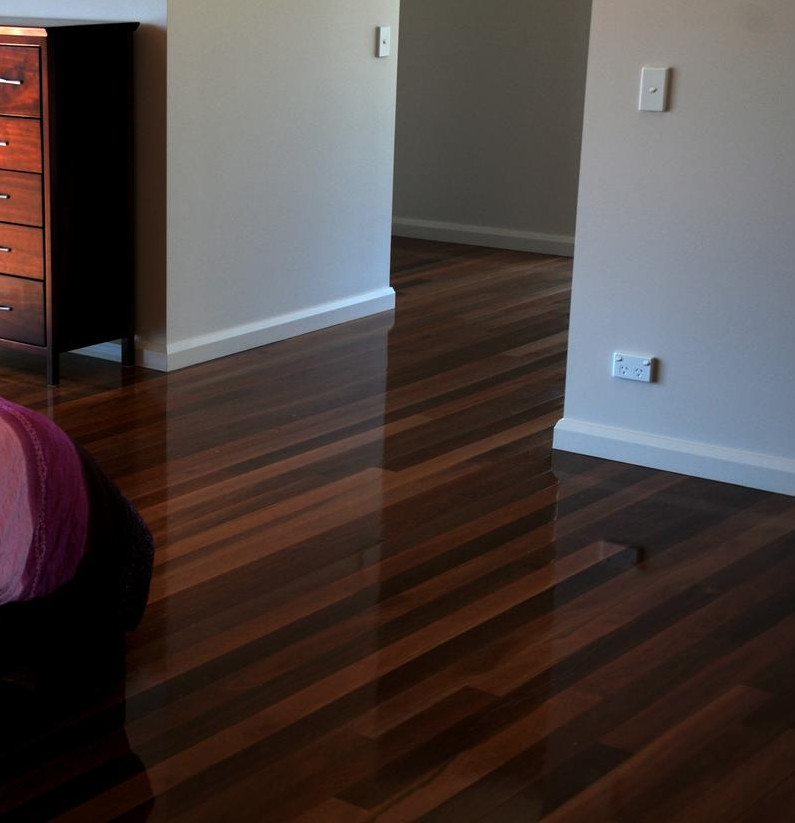
There is something very appealing about a timber floor. The warmth and feel underfoot is unique. And, of course, the dust and dust mites have a hard time hiding – important if there are any allergies or asthma in the family. Here you’ll find a selection of the major Australian hardwoods, complete with a guide to pricing.
There are various grades of flooring for each species. The prices shown here are for select, narrow boards which are typically about 85mm (3.7 inches) wide. Board widths up to 180mm (7.25 inches) wide are usually available at additional cost.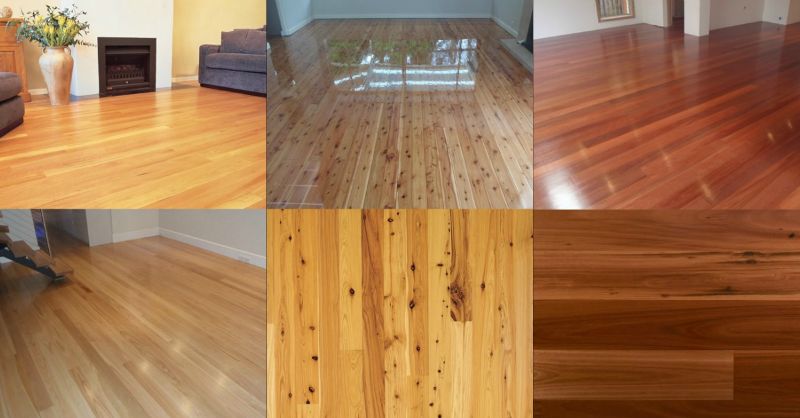
Australian Hardwood Floors
We’ll add more species to this list over time as there are many varieties of Australian Hardwood available. You’ll find a guide to pricing below the photo gallery:
Click on any image to start the lightbox display. Use your Esc key to close the lightbox 😎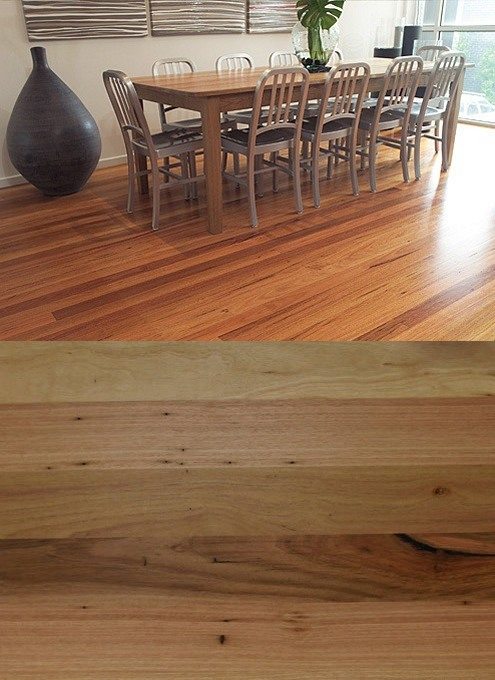

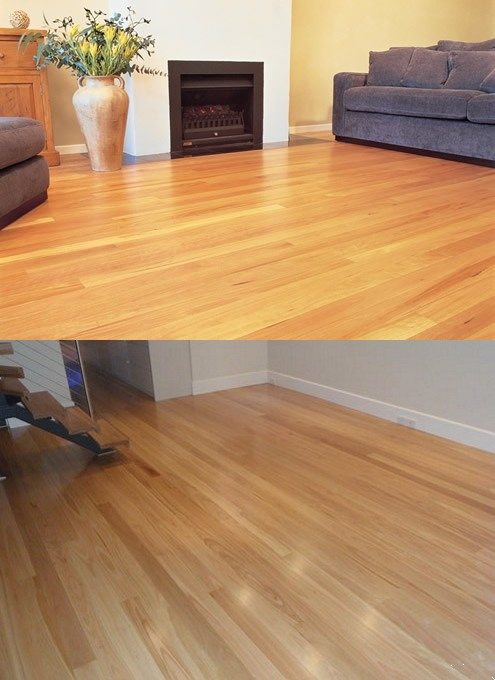
- Australian Beech – actually a mix of two mountain species – Hardness 7.5 Janka – From about $55 m2
- Blue Gum – Hardness 9.0 Janka – From about $72 m2
- Blackbutt – Hardness 9.1 Janka – From about $75 m2

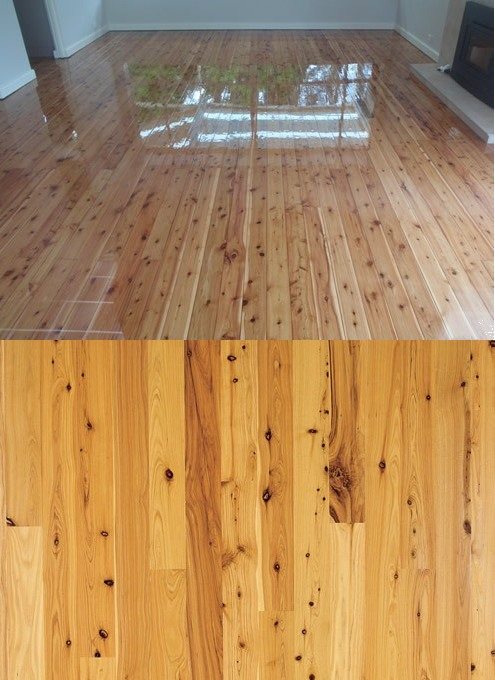

- Brushbox – Hardness 9.5 Janka – From about $93 m2
- Australian Cypress – Hardness 6.1 Janka – From about $56 m2
- Flooded Gum (also called Rose Gum) – Hardness 7.5 – From about $70 m2
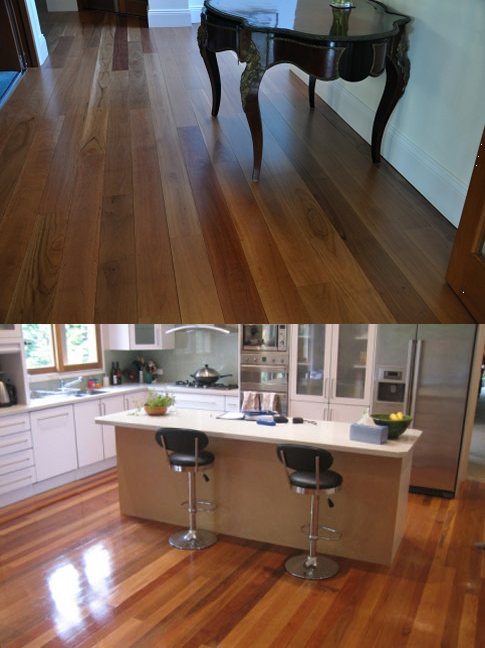
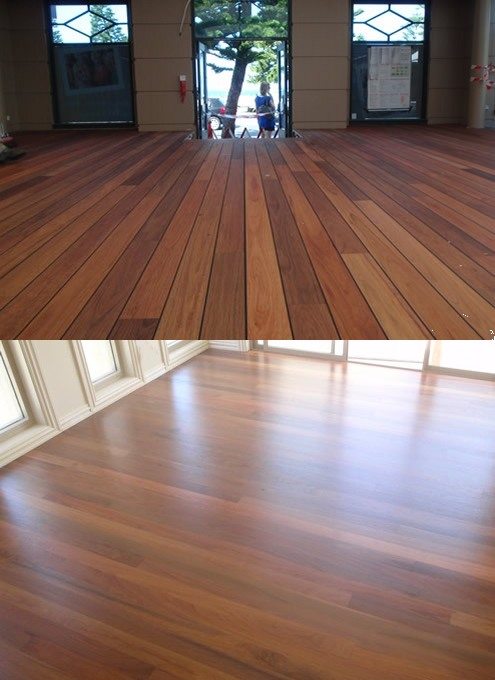
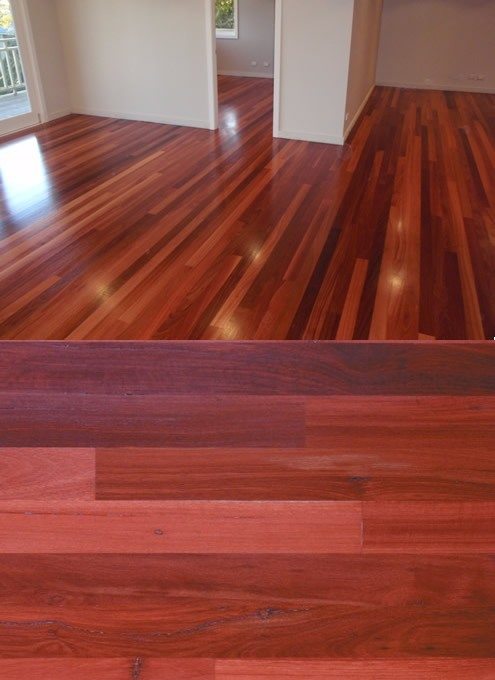
- Grey Box – Hardness 15.0 – From about $78 m2
- Grey Ironbark – Hardness 14.0 Janka – From about $77.00 m2
- Jarrah – Hardness 8.5 Janka – From about $73 m2


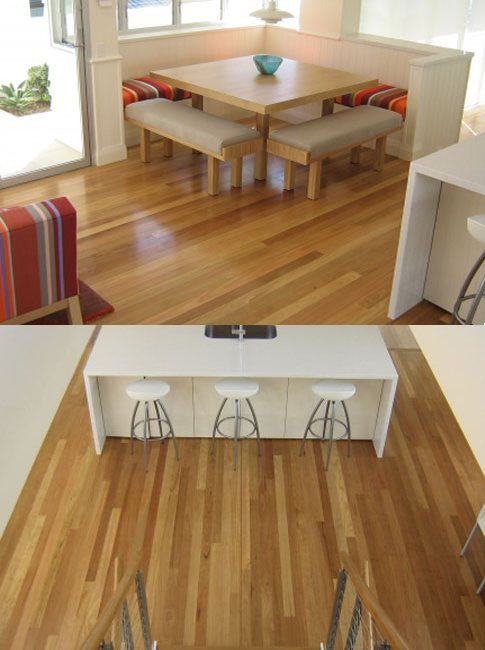
- Karri – Hardness 9.0 Janka – From about $103 m2
- Messmate – hardness 7.1 Janka – From about $56 m2
- New England Oak (Ribbon Gum) – Hardness 6.1 Janka – From about $55 m2
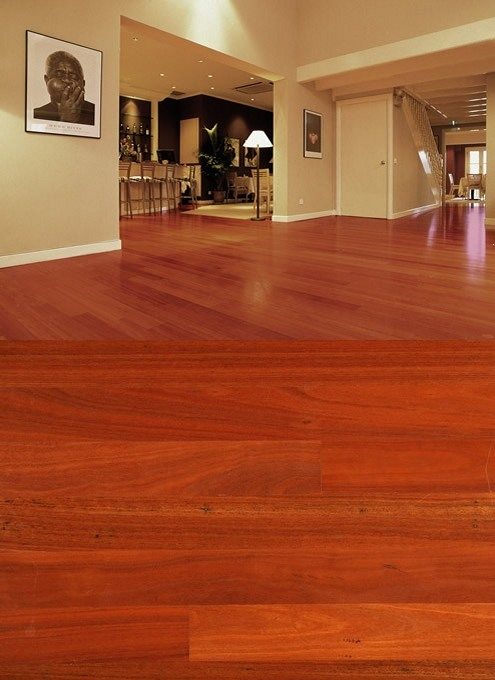
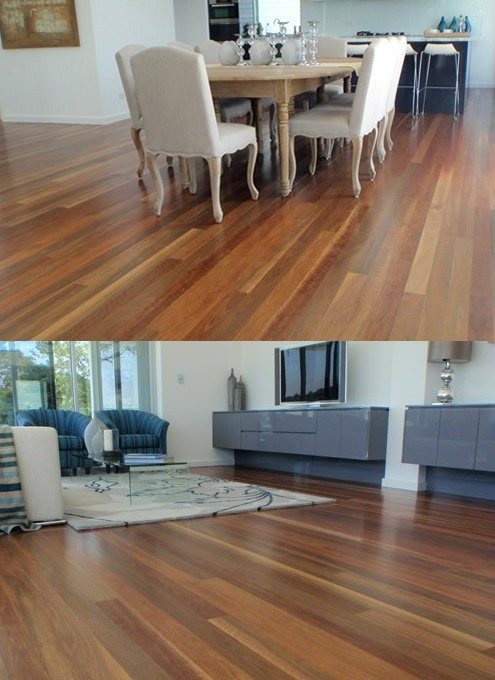
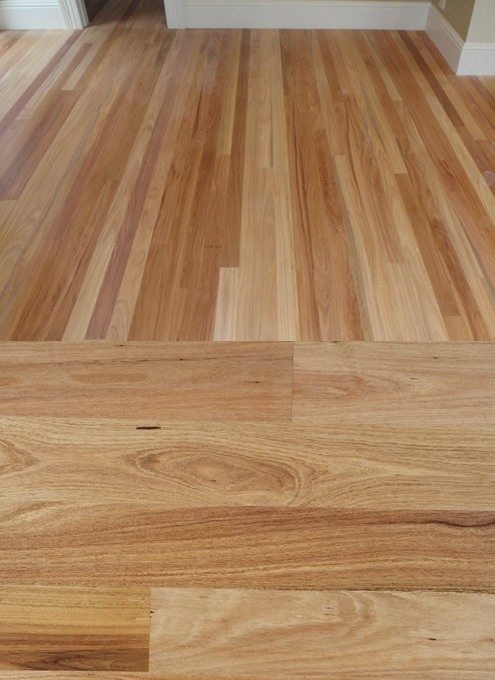
- Red mahogany – Hardness 12.0 Janka – From about $66 m2
- Spotted Gum – Hardness 11.0 Janka – From about $78 m2
- Stringybark – Hardness 8.1 Janka – From about $70 m2
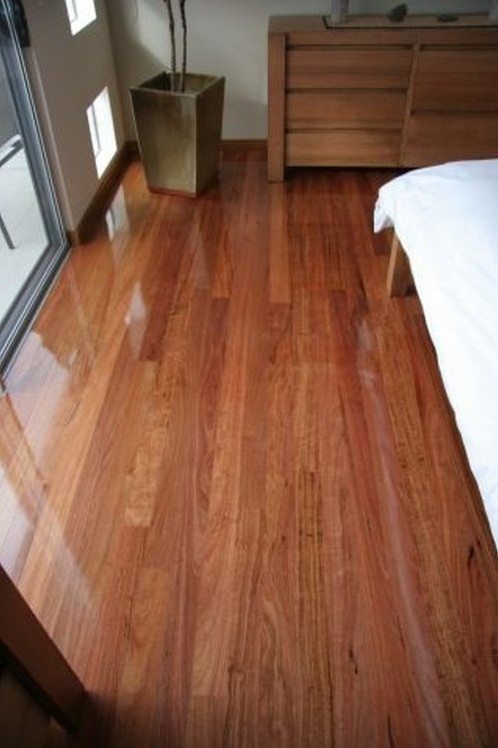
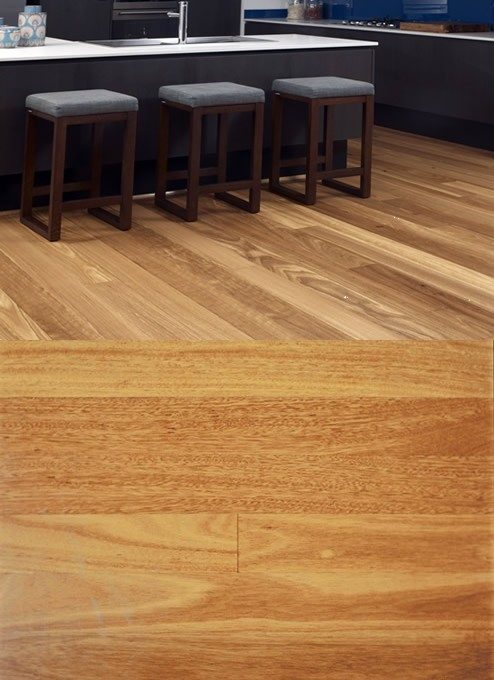
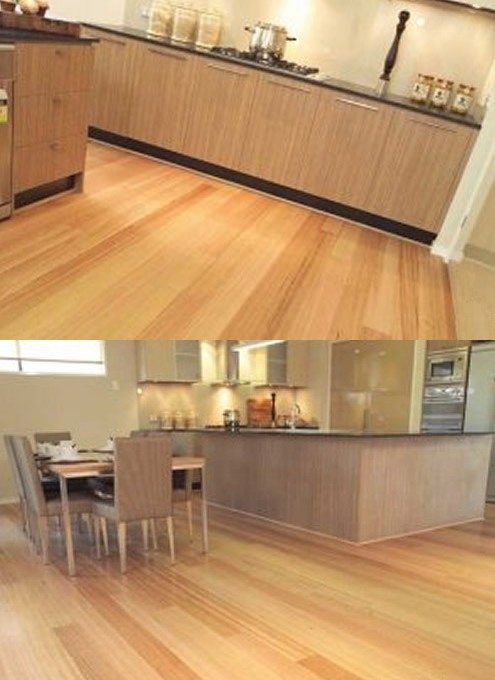
- Red Stringybark shares most characteristics with Stringybark except for colour.
- Tallowwood – Hardness 8.6 – From about $79 m2
- Tasmanian Oak is probably best know for paneling and furniture but it also makes a stunning floor – Harness 5.5 Janka – From about $55 m2

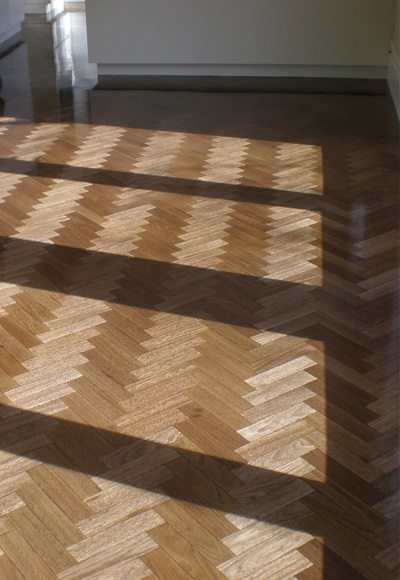
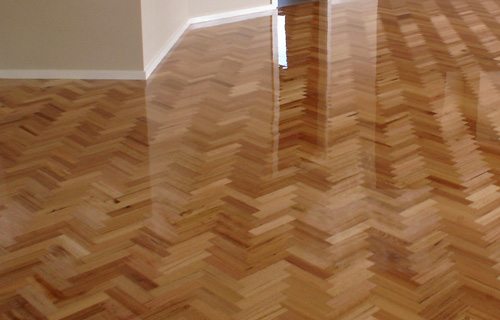
- Turpentine is an incredibly durable timber and is very suited to external environments like verandas. The hardness of 12 Janka, Starts at about $85 m2
- Australian hardwood is also very well suited to parquetry. The centre image shows a Tallowwood example while the right side image is Tasmanian Oak.
- Parquetry flooring can vary widely in both quality and price so it is best to check prices locally for a guide.
Summary of hardness rating and indicative pricing:
Like everything you buy, it pays to shop around, comparing the quality of Australian Hardwood against price…
- Australian Beech – actually a mix of two mountain species – Hardness 7.5 Janka – From about $55 m2
- Blue Gum – Hardness 9.0 Janka – From about $72 m2
- Blackbutt – Hardness 9.1 Janka – From about $75 m2
- Brushbox – Hardness 9.5 Janka – From about $93 m2
- Australian Cypress – Hardness 6.1 Janka – From about $56 m2
- Flooded Gum (also called Rose Gum) – Hardness 7.5 – From about $70 m2
- Grey Box – Hardness 15.0 – From about $78 m2
- Grey Ironbark – Hardness 14.0 Janka – From about $77.00 m2
- Jarrah – Hardness 8.5 Janka – From about $73 m2
- Karri – Hardness 9.0 Janka – From about $103 m2
- Messmate – hardness 7.1 Janka – From about $56 m2
- New England Oak (Ribbon Gum) – Hardness 6.1 Janka – From about $55 m2
- Red mahogany – Hardness 12.0 Janka – From about $66 m2
- Spotted Gum – Hardness 11.0 Janka – From about $78 m2
- Stringybark – Hardness 8.1 Janka – From about $70 m2
- Red Stringybark share most characteristics with Stringybark except for colour.
- Tallowwood – Hardness 8.6 – From about $79 m2
- Tasmanian Oak is probably best know for paneling and furniture but it also makes a stunning floor – Harness 5.5 Janka – From about $55 m2
- Turpentine is an incredibly durable timber and is very suited to external environments like verandas. The hardness of 12 Janka, Starts at about $85 m2
Regional Varieties and Their Unique Properties
Australian hardwood floors are well-known for their adaptability, strength, and beauty. This spectrum of attributes is mostly the result of the several species that abound in many parts of Australia, each with special traits. Here are some of these regional variants together with their unique flooring qualities.
Tasmanian Oak
Popular for its light color and fine grain, Tasmanian oak—often used for flooring and paneling—is a great choice for modern homes. Though it is softer than some other hardwoods, its Janka hardness grade of 5.5 offers a nice underfoot feel. For indoor settings where a bright, breezy sensation is desired, Tasmanian oak flooring are especially appropriate.
Spotted Gum
Originally from eastern Australia’s coastal areas, Spotted Gum is among the most often used Australian hardwood flooring options. It has a rich mix of browns and creams and sporadic olive influence. Extremely hardwearing with a Janka hardness rating of 11.0, Spotted Gum is perfect for high traffic areas in both homes and businesses.
Jarrah
From Western Australia’s woodlands comes Jarrah, distinguished by its rich crimson hue that develops over time into an amazing burgundy. With a Janka hardness of 8.5, Jarrah floors are not only gorgeous but also rather robust. Australian hardwood flooring in locations prone to moisture and pests would benefit much from this wood since it is resistant to insect attacks and deterioration.
Grey Ironbark
Another quite robust choice is grey ironbark, taken from southern Queensland and the coastal areas of New South Wales. With its rich grain and color spectrum from pale brown to deep chocolate, it features a Janka hardness value of 14.0, among the highest. Extremely durable, grey ironbark flooring is fit for both home and business uses where lifetime is of great importance.
Blackbutt
Blackbutt is a flexible Australian hardwood with a simpler colour pallet ranging from cream to pale brown. Given a Janka hardness value of 9.1, this is a sensible option for homes hectic with activity. It is an environmentally beneficial choice since of its fast development rate and strong regenerating qualities. With a smooth finish and uniform texture that fits well to a range of décor styles, blackbutt flooring can enliven any area.
Red Mahogany
Those seeking depth and richness in their flooring will find Red Mahogany to be a great option. Its dark, reddish-brown color with close grain patterns exudes warmth and elegance. Red Mahogany flooring with a 12.0 Janka hardness are ideal for both classic and modern environments since they not only look great but also can resist the demands of heavy use.
Homeowners and builders may guarantee that they not only improve the appearance of a property but also make investments in flooring that will last for generations by selecting the correct type of Australian hardwood flooring depending on regional diversity and special qualities.
Trends and Innovations in Australian Hardwood Flooring
Strong and naturally beautiful, Australian hardwood flooring are a mainstay in homes and businesses. The trends and inventions around these dear materials change along with interior design and architectural technologies. Here we investigate the most innovative designs and newest trends in Australian hardwood flooring influencing contemporary and environmentally friendly living.
Wider Planks
Wider planks in Australian hardwood flooring are becoming more popular since they provide a modern, clean style that could make rooms seem bigger and more open. Often more than 180mm in width, these planks let the natural grain and character of the wood come out, therefore creating every installation distinctive. Wider planks help to smooth out the floor by lowering the seam count, thereby promoting a more coherent look.
Eco-Friendly Finishes
With more people seeking environmentally friendly items, sustainability is front and foremost in floor trends. Natural oil and wax finishes low in volatile organic compounds (VOCs) are used increasingly on Australian hardwood flooring. These coatings not only reduce environmental impact but also improve the natural color of the wood and guard it from wear and strain, therefore assuring the floor stays lovely for many years to come.
Mixed Media Flooring
Australian hardwood flooring is seeing more and more creative patterns including mixed media. Combining conventional wood planks with metal, ceramic, or glass will produce an unusual, striking floor. This trend is especially common in commercial areas where companies want to make a statement but is also showing up in homes seeking a unique edge.
Distressed and Reclaimed Wood
Unquestionably beautiful and with a bit of rustic appeal, damaged and reclaimed Australian timber presents a piece of history. By reusing existing wood, therefore lowering waste and the demand for new resources, this style not only looks well but also encourages environmental responsibility. Particularly well-liked in environments aiming for a historical or industrial character, distressed flooring offers a robust yet elegant choice.
Advanced Installation Techniques
Another development improving the appeal of Australian hardwood flooring is the improvement in installation methods. Easy installation and improved adaptation to seasonal variations are made possible by techniques including floating floors, in which the hardwood is not exactly fastened to the subfloor. This approach guarantees the lifetime of the floor under several climatic situations by helping to prevent warping and cracking.
Australian hardwood keeps being a favored choice for flooring that is both fashionable and sustainable by adopting these trends and advancements. Australian hardwood flooring is a wise option for future-oriented builders and homeowners since these innovations not only meet modern design tastes but also help to preserve our environment.
Conclusion
Australian hardwood floors offer a blend of durability, aesthetic appeal, and environmental sustainability that is unmatched in the flooring industry. As trends evolve, these floors adapt with innovations that enhance both their beauty and functional lifespan. Choosing Australian hardwood for your flooring needs ensures a timeless investment that enhances any space.
If you liked this, you might also like these flooring ideas…






